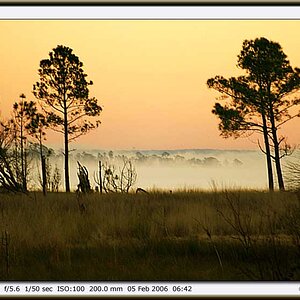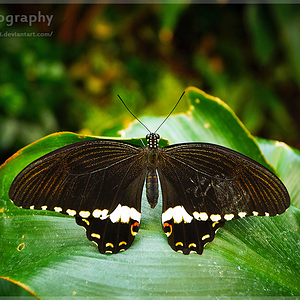Solarflare
No longer a newbie, moving up!
- Joined
- May 24, 2012
- Messages
- 2,898
- Reaction score
- 395
Close, but no cigar: how to design mirrorless right
The final sentence is really funny:
So this is his list of requirements for the satisfyingly good mirrorless:
Fast operation - can I say "duh" ? And half a second startup speed is my personal limit. Anything slower and you're getting in my way of getting the shot.
Control locks - greatly appreciated. The Leica trick for exposure comp (first click activates, but does nothing otherwise) is a great idea, too. Also avoid buttons in too easy to accidentaly press areas (like the video record button with many Leicas).
I want Auto-ISO like this:
(a) configurable per lens
(b) either fixed time or 1/focal length scale
(c) second such scale for activated image stabilization
(d) three quickly selectable modes: Full Auto-ISO, Auto-ISO but the shutter-speed-dial specifies a lower limit for shutter speed, Disabled Auto-ISO. Selecting T or B on the shutter speed dial will automatically disable Auto-ISO, as does selecting M on the mode dial (there is an A+S mode that doesnt disable Auto ISO).
Fully articulated touchscreen fully used in the interface - hell yeah ! But all that can be done with touch screen needs to be doable with the regular four way button, too, though; just slower. Also allow to simply turn monitor completely around so its off.
I primarily need good AF-C and if a mirrorless would manage that one, I would no longer need a DSLR. Thus I favor technology like Canon Dualpixel and/or Panasonic Bokeh-Analyzation. Combine that with great algorithms for tracking etc, please.
There is no such thing as the perfect lens.
There is no such thing as UHS-III, the fastest is UHS-II right now. Could also use one of these faster standards, like XQD. Definitely need two card slots with the ability to use the second as backup.
I do ABSOLUTELY NOT want a battery solution like in the Leica T and SL. Thats poor for storing batteries and leads to all kinds of other problems.
I'm missing WiFi in this list. Password protected and with all whisles and bells, like remote control, backup to the smartphone, automatic upload into the internet the moment I press the shutter release etc.
The final sentence is really funny:
Hell, at this point, I’m frustrated enough that I’d even work for free. MT
So this is his list of requirements for the satisfyingly good mirrorless:
Thats actually in quite some respects better than what you can get right now for DSLRs. Like - different grip sizes ? Awesome.For ease of reference, I’ve broken things up into a few sections. Some things have not been done, but are feasible (in italics)
Haptics/ergonomics/ responsiveness
Autofocus
- No delay in operations for exposure setting or menu navigation – the Q, SL and M4/3 cameras win here.
- Customizable menus and shortcuts – with no arbitrary limitation on assignable functions. Olympus gets this right, Sony is close.
- Direct exposure adjustments (user selectable) on wheels with adjustable directions – not hard settings because you cannot change rotation direction. Again, Olympus and Sony get this right.
- Fully customisable auto-ISO with minimum and maximum sensitivity and shutter speed thresholds, including 1/FL or 1/2FL for zooms etc. (Nikon gets this right)
- Weather sealing. The SL has the beefiest seals I’ve seen, with thicker/more solid gaskets than even my Sony ‘underwater’ compact.
- A body/grip that is the right size to balance with the lenses it is intended to use; FF bodies need to be larger than M4/3 and have more substantial grips – which helps with packing larger batteries, too
- A ‘small’ and a ‘large’ configuration: the small configuration for compact lenses, and the large configuration (e.g. adding a vertical and front grips) for larger lenses – the E-M5 II’s two part grip gets this right, but really doesn’t need to be in two parts.
- Instant (or near instant) power on: 1 second is acceptable, 4+ seconds is not.
- Power switch around the shutter button for quick access and single action to be ready to shoot: Q, Sony.
- Deliberate action (either right friction or interlocks) required to move controls. Nothing to catch on coats/bags/etc.
- Frame rates don’t have to be high, but there should be as little lag and blackout/shot-to-shot delay as possible; the Q and SL are the fastest for this with the Olympus cameras close behind
- Touch screens are good – but make them useful. Panasonic allows for a touch-pad like operation to select AF point – keep this ability when using the finder. Leica’s menu implementation is well done.
- Top panel status LCDs (a la SL) are welcome too. Especially if we can turn off the rear LCD to save power and not make a bright beacon that is very un-stealthy in the dark and ruins our night vision.
- Why not built in Arca-compatible rails?
- Interchangeable grips to suit different hand sizes might be a good idea, too.
Live view/ EVF
- The speed of the Q, SL or current generation Olympus M4/3 cameras
- Direct focus point selection with quick reset-to-centre or preselected point; the SL’s joystick is perfect here
- Ability to decouple focus and shutter release
- PDAF is nice to have but not necessary if CDAF is fast enough
Sensor and image quality
- The high resolution, low-distortion view from the SL
- Don’t clutter the live view area with icons and information; keep things minimal and the view clear – the Q and SL get this right, and the Olympus cameras in some modes. The Sonys are the worst: I don’t need every single logo you have on your box in my finder, too.
- Peaking and exposure zebras are a must.
- An ETTR metering option that exposes until a certain percentage area of the frame clips (settable by the user).
- At least a tilting rear LCD, if not fully articulated.
- A large LCD magnifier if you’re not going to provide an EVF, like the Sigma Quattro.
- The ability to turn off the rear LCD completely for night use, or to set playback in LCD and live view in EVF (with LCD off). I’m surprised nobody really gets this right.
- Instant review with one press to 100% at focus point, and the ability to skip through images at the same point with one of the dials – like the pro Nikons, SL and Olympuses. The Sonys also behave the same, but take a very long time to magnify and page through images.
- One-press shortcut to magnify live view, preferably to 100% or a selectable magnification, with peaking. The Q has the best MF implementation of any mirrorless camera, bar none – it does all three when you turn the ring out of the AF mode.
- Instant preview of exposure even when magnified, and EVF brightness that either represents the scene or represents the exposure – the SL, Q and Olympus cameras get this right. Sony does not, and the lag in previewing exposure can cost you the shot.
System
- Whatever the format, no compression or cooking of raw files – or at least a choice.
- The ability to zoom a raw image without having to also write a JPEG.
Power and power management
- Both fast/large and small/slower lenses. No compromises in optical quality.
- Lenses with hard infinity stops, or a focus clutch like the Olympus pro lenses. Better still, an ‘AF’ position and an instant override ‘MF’ position like the Q. We recognise that AF isn’t always perfect, but with such precise MF possible, there is no excuse not to make this possible with all lenses – that would also encourage buyers to keep purchasing within the system.
Other neat features
- An adequately large battery that you could shoot heavily for a day on one, or at worst, two, batteries.
- The option to charge or run over USB power like the A7II series.
If any of the camera makers wants to make a really serious go of it – and not just send me a camera before embargo with the expectation that I’ll write a positive review – then I’m more than happy to be involved in the design process from an early point where things can still be changed.
- Sensor-based IS like the M4/3 or A7II series cameras
- The ultrasonic cleaner of the Olympus cameras
- If the camera claims to be video-centric, then we need audio input/output jacks, log gamma, uncompressed HDMI out, variable frame rates and a high bitrate
- Selectable mechanical and electronic shutter options. Leaf shutters are great (and combined with an electronic shutter like the Q to hit higher speeds). Electronic first curtain should be standard.
- Do away with the battery door entirely, like the SL and T; put the grip contacts inside the battery compartment to eliminate the little rubber grommets we all lose (and can compromise sealing) and avoid having removable doors (ahem, Sony)
- UHSIII support. Big files are fine; we have big cards. But choking them down slow interfaces is not.
Fast operation - can I say "duh" ? And half a second startup speed is my personal limit. Anything slower and you're getting in my way of getting the shot.
Control locks - greatly appreciated. The Leica trick for exposure comp (first click activates, but does nothing otherwise) is a great idea, too. Also avoid buttons in too easy to accidentaly press areas (like the video record button with many Leicas).
I want Auto-ISO like this:
(a) configurable per lens
(b) either fixed time or 1/focal length scale
(c) second such scale for activated image stabilization
(d) three quickly selectable modes: Full Auto-ISO, Auto-ISO but the shutter-speed-dial specifies a lower limit for shutter speed, Disabled Auto-ISO. Selecting T or B on the shutter speed dial will automatically disable Auto-ISO, as does selecting M on the mode dial (there is an A+S mode that doesnt disable Auto ISO).
Fully articulated touchscreen fully used in the interface - hell yeah ! But all that can be done with touch screen needs to be doable with the regular four way button, too, though; just slower. Also allow to simply turn monitor completely around so its off.
I primarily need good AF-C and if a mirrorless would manage that one, I would no longer need a DSLR. Thus I favor technology like Canon Dualpixel and/or Panasonic Bokeh-Analyzation. Combine that with great algorithms for tracking etc, please.
There is no such thing as the perfect lens.
There is no such thing as UHS-III, the fastest is UHS-II right now. Could also use one of these faster standards, like XQD. Definitely need two card slots with the ability to use the second as backup.
I do ABSOLUTELY NOT want a battery solution like in the Leica T and SL. Thats poor for storing batteries and leads to all kinds of other problems.
I'm missing WiFi in this list. Password protected and with all whisles and bells, like remote control, backup to the smartphone, automatic upload into the internet the moment I press the shutter release etc.






![[No title]](/data/xfmg/thumbnail/34/34148-864c8cb333c478b2dfb9e369908dc329.jpg?1619736320)


![[No title]](/data/xfmg/thumbnail/41/41906-b9041eb5a3fa48eb5d5084ac2198a75c.jpg?1619739940)


![[No title]](/data/xfmg/thumbnail/41/41904-bc50f4d1903ad14e244dbad5cf8e5aa4.jpg?1619739940)
